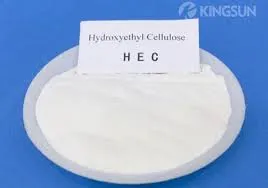
Okt . 11, 2024 19:00 Back to list
Is HPMC Safe for Use in Food and Pharmaceuticals for Consumers?
Is HPMC Safe? An Overview of Hydroxypropyl Methylcellulose
Hydroxypropyl Methylcellulose (HPMC) is a non-ionic, water-soluble polymer derived from cellulose, a natural polymer found in plant cell walls. It is widely used in various applications, ranging from pharmaceuticals and food products to cosmetics and construction materials. Due to its diverse applications, the safety of HPMC is a question that arises frequently among consumers and professionals alike.
Understanding HPMC
HPMC is known for its ability to form gels and emulsions, which makes it an ideal ingredient in a variety of formulations. In the pharmaceutical industry, it is commonly used as a binder in tablet formulations, a thickening agent in liquid medications, and a coating agent for tablets. In the food industry, it is employed as a food additive, providing texture and stability to various products, such as sauces and baked goods. Additionally, its application extends to cosmetics, where HPMC acts as a stabilizer in creams and lotions.
Safety Assessment
The safety of HPMC has been extensively evaluated, and it has been classified as generally recognized as safe (GRAS) by the U.S. Food and Drug Administration (FDA). This classification is significant, as it indicates that HPMC is safe for consumption within specified limits. Moreover, HPMC is considered non-toxic and non-irritating, making it suitable for use in a variety of applications, including sensitive formulations such as eye drops and gastrointestinal medications.
is hpmc safe

Research has shown that HPMC does not pose significant health risks when used as intended. In fact, it is often employed in pharmaceutical formulations for patients with dietary restrictions or those requiring specific formulations, such as vegans, as it does not contain animal-derived ingredients.
Potential Concerns
While HPMC is generally considered safe, there are a few considerations to keep in mind. Some individuals may experience allergic reactions or sensitivity to HPMC, although such cases are rare. Symptoms may include skin irritations or gastrointestinal discomfort, typically resulting from exposure to products containing HPMC. If users experience any adverse effects, it is recommended to discontinue use and consult a healthcare professional.
Furthermore, the safety of HPMC in certain applications can depend on the quality and purity of the substance used. Contaminants or impurities can potentially pose risks, making it crucial for manufacturers to adhere to strict quality control measures.
Conclusion
In conclusion, Hydroxypropyl Methylcellulose (HPMC) is a widely used polymer recognized for its safety in various applications. Its classification as GRAS by the FDA underscores its suitability for consumption. While it poses minimal health risks for most users, individuals with sensitivities or allergies should proceed with caution. Overall, HPMC remains an essential ingredient across multiple industries, providing functional benefits without significant safety concerns. As with any substance, it is wise for consumers to remain informed about the products they use and consult health professionals if they have any questions or concerns regarding HPMC or its applications.
-
tile-bonding-additives-for-stronger-bonds
NewsAug.22,2025
-
construction-grade-rdp-for-wholesale-needs
NewsAug.22,2025
-
trusted-wholesale-hec-partners
NewsAug.22,2025
-
hec-solutions-for-industrial-excellence
NewsAug.22,2025
-
construction-additives-need-hpmc-essentials
NewsAug.22,2025
-
hpmc-versatile-cellulose-ether-for-industries
NewsAug.22,2025







